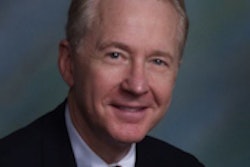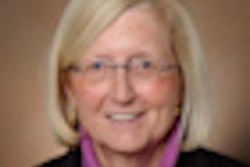How should medical professionalism be taught to radiology residents? Small group discussions are effective, according to a study presented at the RSNA 2012 annual meeting that focused on teaching the principles of professionalism.
Originally published in 2002, the Physician Charter on Medical Professionalism mandates three important principles about patient care: the primacy of patient welfare, patient autonomy, and social justice (Annals of Internal Medicine, February 5, 2002, Vol. 136:3, pp. 243-246), explained Dr. Ethan Halpern in his RSNA presentation. In his experience, talking about the charter in small groups of residents is a better way to approach the subject than measuring and grading professionalism formally.
The charter is poorly understood despite its formal adoption in many medical specialties -- including radiology through the RSNA, said Halpern, who is a professor of radiology at Thomas Jefferson University. But its principles can be taught in ways that speak to the pressures of today's radiology practice, while encouraging residents to think about what professionalism means on a day-to-day basis, he said.
"Professionalism is now a core competency mandated by the [Accreditation Council for Graduate Medical Education (ACGME)]; we actually score all of our residents on this, but most people who do the scoring are not familiar with the physician charter," and the issues get complicated in daily practice, he said.
There are many more constraints now with institutions trying to cut costs, and people are attempting to cut corners in treating patients, according to Halpern. "We're always trying to do more with less," he said.
Take the discrepancy between patient charges and insurance payments: If one insurer pays $100 for an exam and another pays just $70 for the same test, it's natural to steer patients with better-paying insurance accordingly. "But that's an issue of social justice, and we're not allowed to do that," he said.
Similarly, the Patient Protection and Affordable Care Act, aka Obamacare, will establish new insurance programs. "What if these programs pay us less?" he asked "Are physicians obligated by this charter to accept patients who come from public health insurance?" In the eyes of the charter, they are.
The pressure of PACS
Then there is the productivity pressure of PACS, which has transformed the practice of radiology in recent years, he said.
"When I was in training we had films; we had doctors who came to the [reading] rooms, we discussed the films with those doctors, and I knew those doctors," Halpern said.
Nowadays radiologists are removed from clinicians, resulting in a loss of contact and interpersonal communication. Residents who train today no longer feel they can call the primary care physician and establish a relationship as in years past. As a result, image interpretation has been transformed into a commodity rather than an interaction with a colleague, he said.
Add to that the pressures created by relative value units (RVUs). Institutions want radiologists to keep their RVUs up and cut their reading times, he said, and despite the new focus on radiologists spending more time with patients, institutional pressure goes in the opposite direction.
"There's really pressure to minimize patient interaction because every time you interact with a patient, that's going to cut your RVUs," he said. "PACS is a great way to do this because it can minimize patient interruptions. I can go into my office and read from there and no one is going to come in and bother me -- but are we cutting corners on the quality of patient care?"
Increased public awareness of healthcare on the Internet has given patients a feeling of greater autonomy, and they're spending more time asking their physicians many more questions, he added.
In Halpern's study, the researchers aimed to explore the effect of discussing medical professionalism on the attitudes of trainees toward the three fundamental issues in the physician charter: patient welfare, patient autonomy, and social justice.
Halpern and colleagues provided this instruction to a group of medical students and a group of third-year residents. The groups were asked to participate in small group discussions after reading the physician charter and two articles:
- Margulis AR. The constantly changing field of radiology: maintaining professionalism in an era of electronic communication. Radiology. 2010;257(1):22-23.
- Donnelly LF, Strife JL. Establishing a program to promote professionalism and effective communication in radiology. Radiology. 2006;238(3):773-779.
Both groups were surveyed to describe their understanding of professionalism both before and after the small group discussions, Halpern said. Before the readings and informal group discussions, students and residents described professionalism quite similarly.
Students and residents alike spoke of "the obligation to treat others respectfully, the obligation to treat patients as they would like to be treated, but there was very little awareness of the specifics of the physician charter," Halpern said. "Many of them didn't know about the specific issues that are raised by the physician charter versus the pressures of PACS and RVU productivity in departments."
Before the discussions, students and residents didn't appreciate the conflicts between the principles of patient welfare and autonomy, and the decline in personal communication with patients and referring physicians in a PACS-based practice, he said. After the sessions, both groups expressed a better understanding of the importance of professionalism in the modern radiology practice, as well as a better appreciation of the charter for navigating these pressures.
"Our residents are very aware of the pressure for increased throughput because they get it every day, but they're not consciously appreciating the conflict between the principles of patient welfare and autonomy and declined personal communication based on PACS and the pressure of reading cases due to the RVU system," he said. But there was a much greater understanding of the inherent conflicts of a modern-day practice after the discussions.
The principles of medical professionalism in the charter have been adopted by hundreds of medical societies including RSNA, but students and residents may not understand the importance of the charter in the practice of radiology, he said.
"We need to make radiology a high-quality physician practice rather than a commodity," and to do it, "we have to really impose the physician charter on ourselves," Halpern said.
These kinds of discussions should be fully integrated into the radiology curriculum, he said, and although his experience comes from working with students and residents, the same lessons need to be understood by the attending physicians.
Asked by a moderator what residents and radiologists can do to adhere to these principles in real-life practice, Halpern said that compliance is easier in some matters than others.
"I have become much more self-conscious," he said. "When I see that it's 4:30 in the afternoon and I have a pile of 40 cases left to read, I realize that my professionalism obligates me to spend as much time on those cases as at 8:30 in the morning when I have a full day ahead of me. And when I see patients coming in who perhaps have [less] insurance coverage, I don't know what to do about that. We clearly discriminate against people based on their insurance policies and whether they pay, and that's 100% against the physician charter."



















